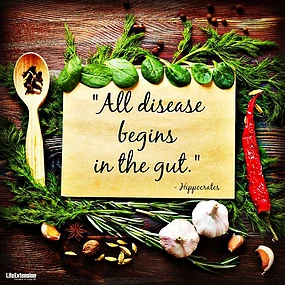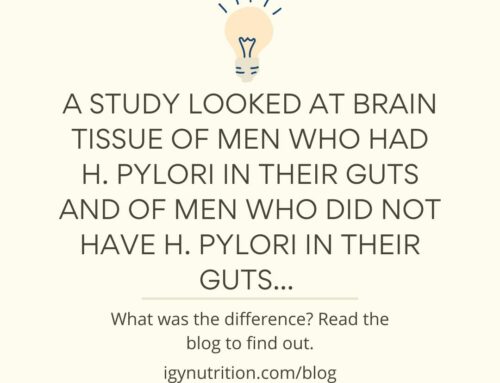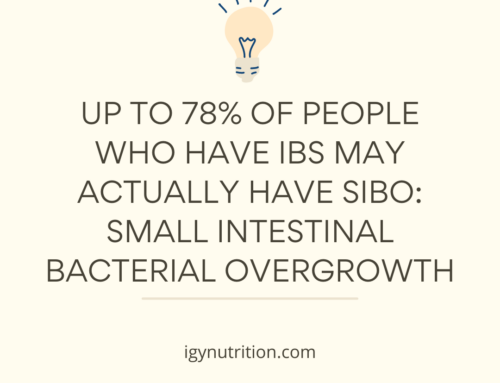Whilst the function of the complex organ known as the gut microbiota is only recently being heavily researched, evidence shows that the levels of “good” vs “bad” bacteria impact the overall potential of a ‘happy gut’[1].
Although the role of the microbiota in disease and overall health has yet to be determined, there is a lot to be uncovered. We hear often of probiotics and the potential health benefits they may provide. Rising discussion between scientists, doctors, and health blogs have stated that some of these live beneficial bacteria can be found in the supermarket. We have more than likely all seen the infamous yogurt commercials talking about ‘improved digestion’ and the bacteria/probiotics added to these products. Yes, yogurt often contains strains of ‘good’ bacteria, most commonly Lactobacillus or Bifidobacterium — but where else (I can’t be the only one completely anti-yogurt) might you find these probiotic foods? What benefits do they have?
-
Apples: High in fiber (50% of the fiber content is pectin); increases levels of Bifidobacterium, Lactobacillus, Clostridium coccoides, which are all beneficial bacteria, and other Clostridium Cluster that is involved in butyrate and beta glucuronidase production [2]; which is an indicator that healthy bacteria are present in sufficient amounts.
-
Cocoa (Yes, CHOCOLATE!): Increases levels of bifidobacteria and lactobacilli, which are healthy bacteria, and decreases clostridia counts; which is a pathogenic kind of bacteria [3]. It has also recently been demonstrated that high intakes of polyphenols from cocoa are able to produce changes in microbiota composition in animals and in humans.[4]
-
Kefir: Kefir grains contain about 30 strains of beneficial bacteria and yeasts, making it a very rich and diverse probiotic source [ 5 , 6 ].
-
Asparagus: High inulin content. Inulin enhances the growth of beneficial bacteria and inhibits the growth of certain pathogenic bacteria. Increases levels of bifidobacteria and lactobacilli and has anti-fungal activity toward Botrytiscinerea [ 7 ].
-
Miso Soup w/ Natto: Increases Bacillus, Streptococcus, Lactobacillus, and Bifidobacterium; all beneficial microbes; decreases enterobacteriaceae, lecithinase-positive clostridia, and E. Coli; which are pathogens.
-
Banana: increases the number of bifidobacteria bacteria and decreases bloating [ 8 ].
In short, these foods have shown to contain many of the ‘good’ bacteria and studies suggest they may aid in gut discomfort and digestion.
Although the list goes on, this a great start to incorporating prebiotic and probiotic foods to your diet. I mean, who doesn’t want a reason to eat chocolate? Enjoy!
Follow Thryve to receive updates on microbiome news: www.thryveinside.com Thryve is not intended to diagnose a disease or other medical condition, or tell you anything about your risk for developing a disease or condition in the future.
Thryve is not intended as a substitute for medical diagnosis or treatment, and should not be used as the basis for a diagnosis or treatment. You should always consult your physician or healthcare provider about any health issues and before making any changes to your current care.
Sources:
1. Quigley, E. M. (2013, September). Gut Bacteria in Health and Disease. Retrieved April 01, 2017, from https://www.ncbi.nlm.nih.gov/pmc/articles/PMC3983973/
2. Licht, T. R., Hansen, M., Bergström, A., Poulsen, M., Krath, B. N., Markowski, J., Wilcks, A. (2010,January 20). Effects of apples and specific apple components on the cecal environment of conventional rats: role of apple pectin.
Retrieved April 01, 2017, from https://www.ncbi.nlm.nih.gov/pubmed/20089145
3. Tzounis, X., Rodriguez-Mateos, A., Vulevic, J., Gibson, G. R., & Kwik-Uribe, A. C. (2011, January 01). Prebiotic evaluation of cocoa-derived flavanols in healthy humans by using a randomized, controlled, double-blind, crossover intervention study. Retrieved April 01, 2017, from http://ajcn.nutrition.org/content/93/1/62.long
4. Massot-Cladera, M., Abril-Gil, M., Torres, S., Franch, A., Castell, M., & Perez-Cano, F. J. (2014). Impact of cocoa polyphenol extracts on the immune system and microbiota in two strains of young rats. British Journal of Nutrition , 112 , 1944-1954. Retrieved April 1, 2017, from https://www.cambridge.org/core/services/aop-cambridge-core/content/view/S0007114514003080
5. Leite, A. M., Miguel, M. A., Peixoto, R. S., Rosado, A. S., Silva, J. T., & Paschoalin, V. M. (2013, October 30). Microbiological, technological and therapeutic properties of kefir: a natural probiotic beverage.
Retrieved April 01, 2017, from https://www.ncbi.nlm.nih.gov/pmc/articles/PMC3833126/
6. Guzel-Seydim, Z. B., Kok-Tas, T., Greene, A. K., & Seydim, A. C. (2011, March 3). Review: Functional Properties of Kefir. Retrieved April 01, 2017, from http://www.tandfonline.com/doi/abs/10.1080/10408390903579029?journalCode=bfsn20
7. Wang, H., & Ng, T. (2001, November 23). Isolation of a Novel Deoxyribonuclease with Antifungal Activity from Asparagus officinalis Seeds. Retrieved April 01, 2017, from http://www.sciencedirect.com/science/article/pii/S0006291X01959637?via%3Dihub
8. Mitsou, E., Kougia, E., Nomikos, T., Yannakoulia, M., Mountzouris, K., & Kyriacou, A. (2011, March 18). Effect of banana consumption on faecal microbiota: A randomised, controlled trial. Retrieved April 01, 2017, from http://www.sciencedirect.com/science/article/pii/S1075996411000424




